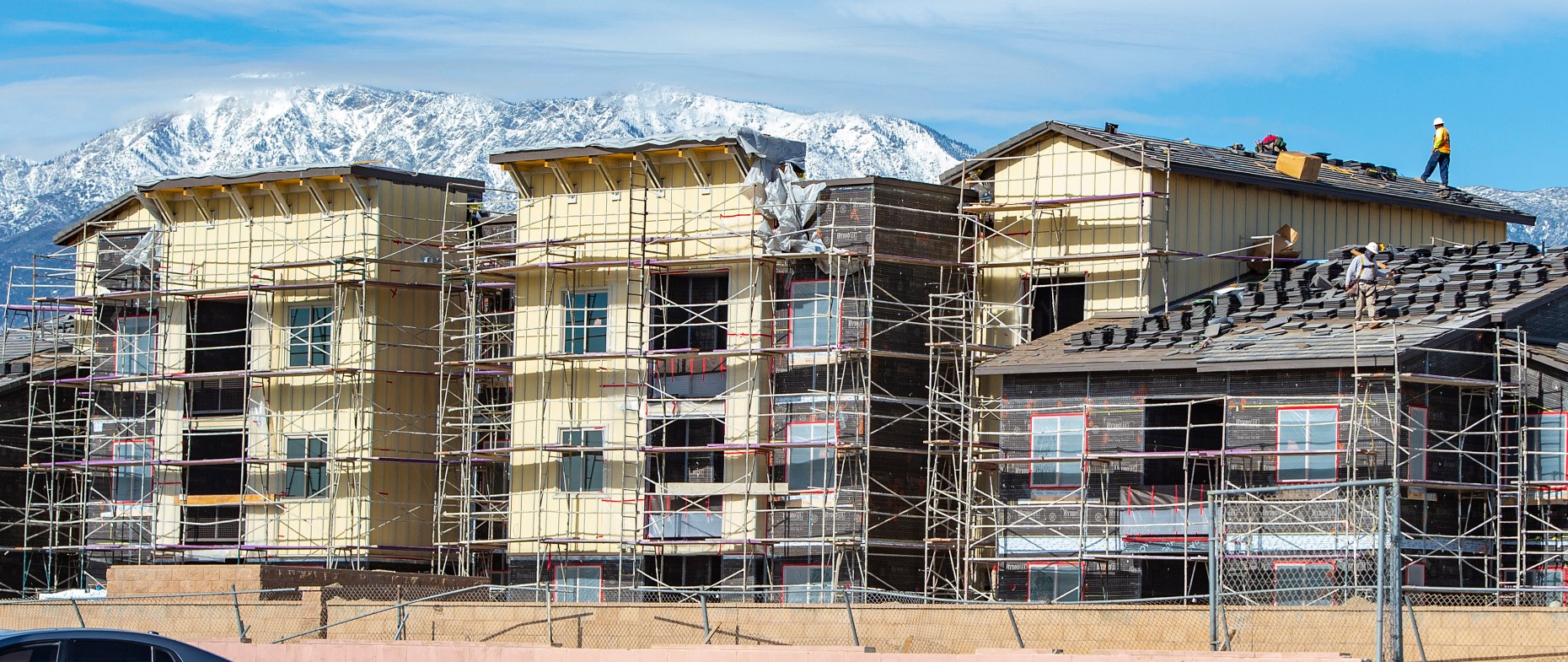California cities, counties failing again on affordable housing goals

Only 3% of California’s cities and counties are fully on track to meet state goals to build sufficient housing — and 30% are failing to issue any permits at all for affordable housing, an analysis of state data shows.
The Southern California News Group used that data to create its second annual housing permit report card for all 539 cities and counties in the state. Only 33 were doing well enough to earn an A, while 96 got an F. The average grade was a C-minus.
There was some improvement from the year before: more B’s, fewer F’s. However, the gulf continues to widen between how many homes are being built for lower- and higher-income buyers.
Of the more than 116,000 permits that jurisdictions reported issuing in 2019, the year covered by the most recent state data, 78% were for above-moderate-income housing. A mere 13% were for moderate-income housing and 9% for low- and very-low-income housing.
Scott Wiener, who heads the state Senate Housing Committee, said the report card highlights how big a hole California has dug when it comes to building adequate housing.
“We still have a culture in California,” said Wiener, D-San Francisco, “of always questioning new housing, of having a laundry list of objections to any kind of housing — it’s the wrong location, it’s going to affect parking, it’s going to affect traffic, it’s going to do all these terrible things — and losing sight of the fact that housing is one of the fundamental human needs.”
Although homebuilding has risen steadily since the end of the Great Recession, it is still nowhere near the levels that state leaders say are needed to fix California’s housing crisis.
To that end, municipalities are about to see their housing goals go up — way up. Southern California is being asked to add more than 1.3 million homes between 2021 and 2029, an expectation that many local leaders are protesting as unrealistic. The state isn’t backing down.
With so many locations failing to meet their current goals, how will they meet even higher ones?
In early January, Gov. Gavin Newsom proposed creating a new Housing Accountability Unit to provide technical assistance to local governments — and enforcement action against those that refuse to comply with state laws.
Wiener, who called the governor’s proposal “a HUGE step” on Twitter, said in an interview: “It will create a focal point in state government to really send a message that when we pass a state housing law, we mean it.”
RHNA cycles
California uses a process called the Regional Housing Needs Assessment, or RHNA (pronounced “reena”), to determine how many housing units are needed in various regions. Local governments within each region then divvy up the total number between all of the cities and unincorporated county areas. The process happens every five to eight years, with the starting year staggered between different regions.
Each jurisdiction’s total number is divided into four categories:
- Very-low-income housing that would be affordable for people making less than half of the area’s median income
- Low-income housing for people making 51-80% of median income
- Moderate-income housing for people making 81-120% of median income
- Above-moderate-income housing for people making more than 120% of median income
The low and very low categories are what the state considers “affordable housing.”
Cities and counties are required by law to adopt land-use plans and zone enough land to accommodate their RHNA goals, but not to actually ensure homes are built — that’s up to developers.
There are few real consequences for not meeting RHNA goals. In places that have fallen far enough behind, developers can seek a streamlined approval process for projects that include a certain amount of affordable units, but few developers are using it.
Every April, jurisdictions are supposed to send the state housing department a progress report (not all do) saying how many homes they permitted in each category the previous year. In 2020, the state gave jurisdictions a little extra time because of the pandemic, then initially released a report with errors in it, so accurate numbers from 2019 weren’t available until October 2020.
In the Southern California News Group’s report card, each jurisdiction is graded on how close it is to being on track to the goal in each of those four categories, based on how far the region is into its RHNA cycle.
For jurisdictions in Los Angeles, Orange, Riverside, San Bernardino, Ventura and Imperial counties — which make up the Southern California Association of Governments — 2019 was year six of an eight-year cycle. So if a city had a goal of 80 moderate-income homes, it would need to have permitted at least 60 to be on track and get an A grade. If it had permitted 30, it would get a C. Zero meant an F.
The overall grade factored in the four category grades as well as any extra credit a jurisdiction earned for doing well in the lower- and moderate-income categories, improving from 2018 and degree of difficulty.

